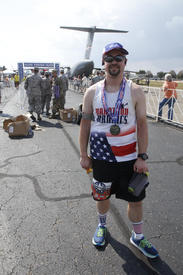100 mile wilderness
Options

theonewiththedream
Posts: 14 Member
Hi all!
I'm doing my first long distance solo hike this summer. It will be the second time I have hiked the 100 mile wilderness. I am curious to see what sudgestions/advice people have. Also, I'm going stoveless so any ideas on healthy food that doesn't require hot water?
I'm doing my first long distance solo hike this summer. It will be the second time I have hiked the 100 mile wilderness. I am curious to see what sudgestions/advice people have. Also, I'm going stoveless so any ideas on healthy food that doesn't require hot water?
0
Replies
-
I guess I would suggest GORP, pretzels, and Clif bars, but going stove-less is going to be tough, IMO.0
-
Oh, also I was wondering what sudgestions anyone might have for non tent sleeping options. I am going for five days so I am packing super light so I need something lightweight and hopefully easy to set up and break down.0
-
Just use a bivy to sleep under. As long as there is a tree to tie the one end to and a few rocks around, you'll be fine. Also...I would suggest bringing something to cook with. If you don't want to bring a full stove, at least bring an esbit or something- Foodwise, if you can cook, you can bring lighter stuff. Otherwise, 5 days of tasty food in the form of nuts/fruit could be pretty heavy. As well as boring to eat. But that's just my opinion.0
-
A bivy is lightweight. If you want to go even lighter, I've seen people take a tarp, put rocks or use tent stakes for the corners, and prop up the middle with their hiking pole. Of course, this has no floor and has less protection from the wind than a tent or bivy that has sides that come right down and attach to the sides. But, assuming it is waterproof, it will keep the rain and most of the wind off of you. For me, the extra 1-2 lbs. of a bivy is preferable.0
-
theonewiththedream wrote: »Oh, also I was wondering what sudgestions anyone might have for non tent sleeping options. I am going for five days so I am packing super light so I need something lightweight and hopefully easy to set up and break down.
Check out hammock camping. It's much lighter than using a tent. And, it gets you off the ground. You can camp in places where a tent won't work such as steep slopes, rocky ground, etc.
0 -
Whiteblaze.net and Appalachian Trail Section Hikers on Facebook may also be helpful. I wouldn't do without hot drinks in Maine in any season. A folding canister stove with fuel would add about half a pound if you use only once a day. I have an MSR stove about the size of a glasses case.0
-
patrickjd9 wrote: »Whiteblaze.net and Appalachian Trail Section Hikers on Facebook may also be helpful. I wouldn't do without hot drinks in Maine in any season. A folding canister stove with fuel would add about half a pound if you use only once a day. I have an MSR stove about the size of a glasses case.
I second this. The cheap Coleman BP stove I bought at Wal-Mart weighs maybe 8 oz, and the fuel isn't that much either. Of all the things to save weight; Not sure going without a stove is one of them.
0 -
You might also consider one of the wood burning stoves out there such as the Solo or Bush Buddy. Basically you can use twigs for fuel with are readily available on the trail. You can also carry some Esbit tablets as backup just in case a downpour soaks the forest and makes the twigs too difficult to light.0
-
You can make a little stick stove (or twig rig as my buddy calls them" out of some #8 cans that weighs very little. Small alcohol stoves can also be efficient, but the jet stove is worth the weight (pun intended) IMHO.
I think a tarp is preferrable to bivy or tent because of condensation. I use trek poles anyway and so I made a little 3 mil plastic tarp that uses the poles and a few aluminum stakes to set up. Mine is for tow but would be even lighter for one. Mine is set up similar to a Ray Way tarp, but plastic instead of Silnylon but has the little "beaks" that help with wind and rain. Admittedly a flat tarp (or hex) pitched pup tent style is simpler to set up solo and can be set with just twine and no poles.0
This discussion has been closed.





